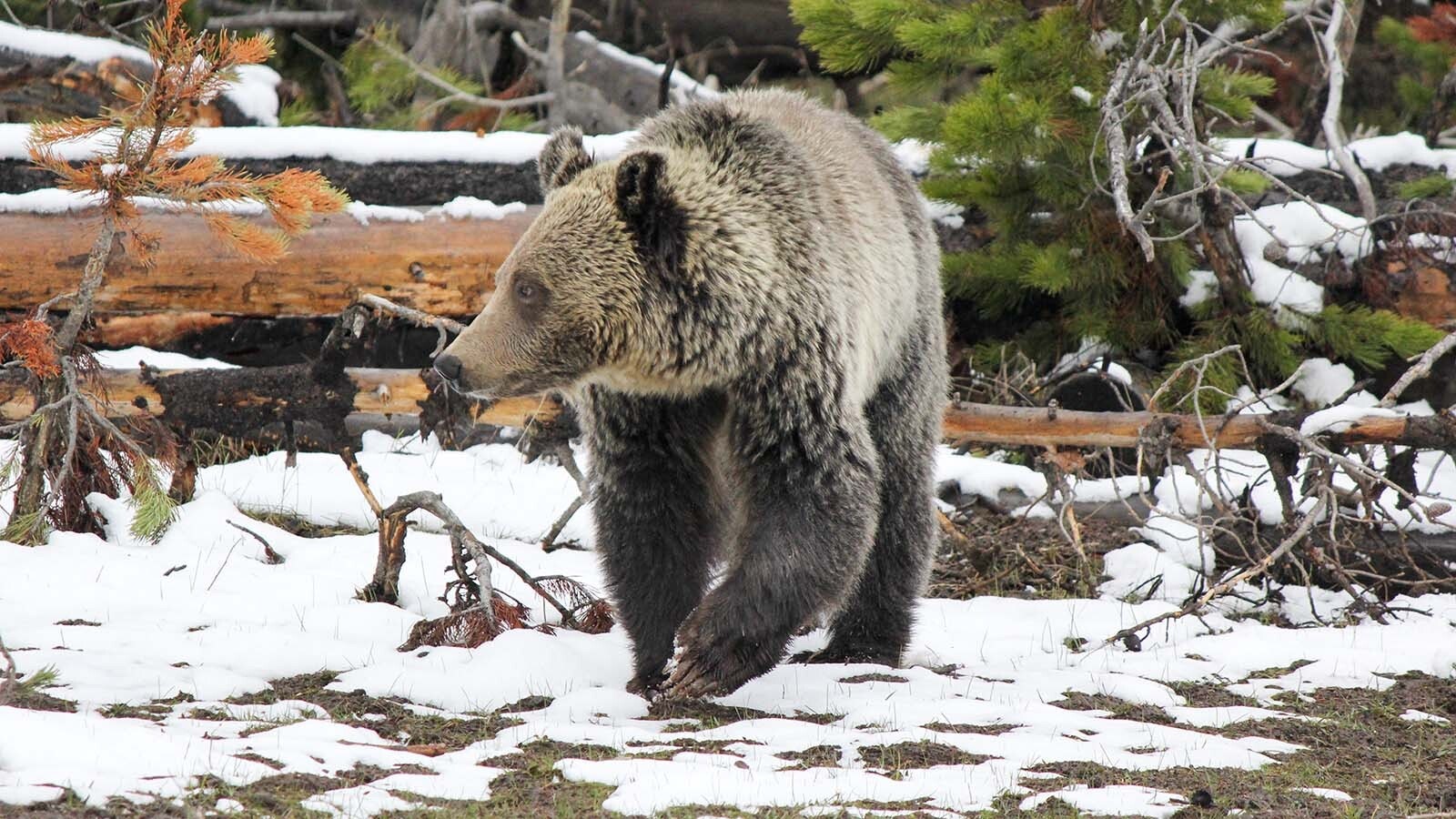Stopping a charging with a grizzly with bear spray or a powerful handgun can be a dangerous gamble, but dropping one with birdshot from a .410 shotgun seems downright impossible.
That’s because the .410 is generally considered about the least powerful shotgun with less stopping power.
But it happened in Montana in 2003, according to news reports from the time. The story is still circulating, and still causing jaws to drop.
Against all odds, the load of birdshot fired by James Beeman of Fortine, Montana, went right up the nose of the 350-pound female grizzly that charged him.
And only two of the pellets penetrated all the way into the bear’s brain, instantly killing it, according to accounts.
Beeman could not be reached for comment, but Wyoming hunters are still shaking their heads in disbelief over the one-in-a-million feat.
‘That’s Insane’
“I’m glad it worked out for him, but that’s insane,” Garrett Kalkowski of Cody told Cowboy State Daily.
He knows exactly what it’s like to have a close, terrifying encounter with a grizzly. On Oct. 3, he used a Glock 10 mm pistol to save himself and his father Vince from a grizzly mauling in the Meeteetse area.
Noted Wyoming outdoorsman Paul Ulrich carries a pistol capable of firing .410 shotshells in the backcountry. He told Cowboy State Daily that he was floored to learn that a load of birdshot from a .410 stopped a grizzly.
He carries the shotshells for relatively small mountain grouse, not bears.
“.410 shells have a hard time knocking down a sage grouse, let alone a full-size, charging grizzly,” he said.
Bears In The Chicken Coop
Beeman’s story still makes the rounds on social media and online hunting forums. It was most recently recounted in AmmoLand Shooting Sports News.
It was apparently first reported in 2003 by the Daily Inter Lake, a Western Montana newspaper.
According to accounts, Beeman heard a commotion coming from the chicken coop outside his rural home at about 4 a.m. one October morning.
He was aware that grizzlies lived in the area.
However, thinking it must be a skunk raiding his chicken coop, Beeman put on a headlamp, bypassed his more powerful firearms and grabbed his bolt-action .410 shotgun, loaded with #7 ½ birdshot.
But instead of a skunk, he saw two grizzly cubs fleeing the coop. Then the female mom appeared with a chicken in her mouth.
The grizzly dropped the chicken and charged Beeman from about 15 feet away. By the time he was able to fire his shotgun from the hip, the bear’s nose was about 3 feet away from the gun’s muzzle, according to reports.
The bear fell dead at his feet.
Ulrich said he can’t imagine the nerves it must have taken to hold steady and make that shot.
“That guy is forged from wrought iron,” he said.
Hardcast Bullets
Grizzlies being brought down with tiny weapons isn’t completely unheard of.
One of the biggest bears ever killed was shot with a .22 rifle in 1953 by Bella Twin, a 63-year-old Canadian Cree grandmother.
As far as shotguns go, .410s are the smallest of the lot.
Most shotguns are measured by gauge, such as 20-gauge or 12-gauge. That refers to the number of lead balls the size of the gun’s bore that it would take to equal a pound.
So, a 12-gauge means 12 bore-sized lead balls would add up to a pound.
The .410 shotgun actually corresponds to a rifle caliber, so it is loaded with distinctively skinny shells. And #7 ½ birdshot is one of the smallest shot sizes, usually used for smaller birds, such as quail.
Ulrich has a Taurus Judge revolver that he carries with him while hunting in the backcountry. That handgun can chamber either .410 shotshells or .45 Long Colt pistol ammunition.
The .45 Long Colt packs considerable punch. And when he’s in grizzly country, Ulrich loads the revolver with .45 cartridges topped with cast lead bullets.
Cast lead means the bullets have been infused with alloy that make them hard, not soft like pure lead bullets.
Cast lead bullets are recommended for predator defense, as they’re capable of smashing through thick hide, muscle and bone to get to the animals’ brains or vital organs.
“I carry the .410 shotshells in my pocket” just in case a mountain grouse appears at close range, Ulrich said.
Loading the revolver with shotshells for bear defense isn’t something he’d ever be willing to try.
Likewise, Kalkowski said the 10 mm pistol he used to kill the adult female grizzly that attacked him and his father was loaded with 200-grain cast lead bullets.
Within A Few Feet
Like Beeman was reported to be, Kalkowski said he was only a few feet away from the grizzly when he opened fire.
He ended up emptying his pistol’s entire 15-round magazine during the encounter.
Beeman’s one-shot kill was amazing and incredibly lucky, he said.
Since a load of shot stays together in practically one big mass at such near-point-blank ranges, Kalkowski said he understands why Beeman had a chance, albeit an extremely slim one.
“Man, in my situation it (a .410 shotgun) might have worked,” but it’s not something he’d have wanted to bet his or his father’s life on.
In the end, it was that one-in-a-million shot, up the bear’s nose, through the nasal cavity, and those last two pellets into the brain, that made the difference, Kalkowski said.
Mark Heinz can be reached at mark@cowboystatedaily.com.





